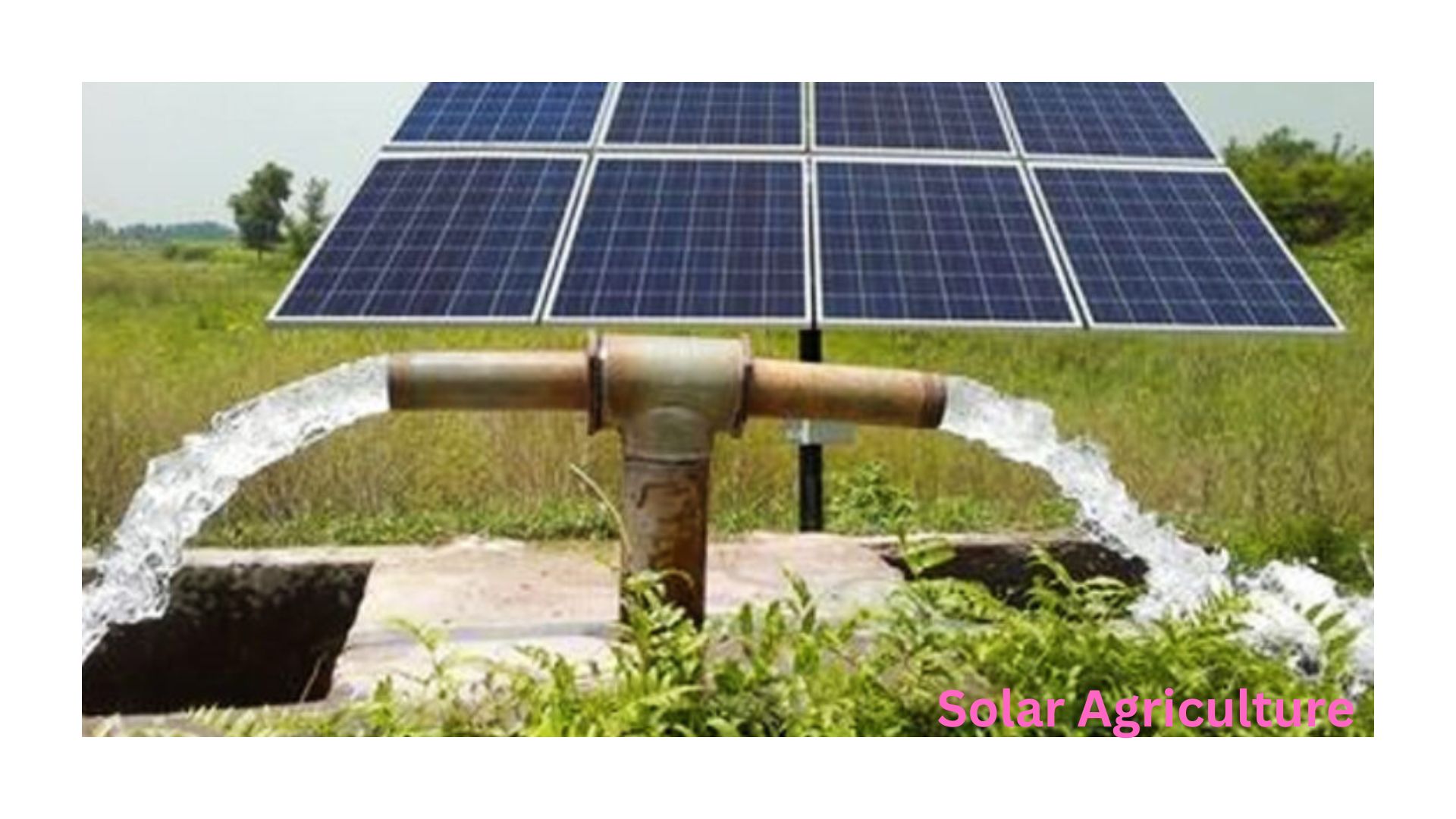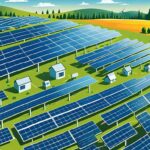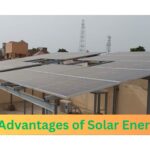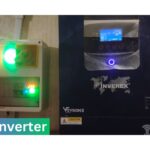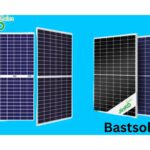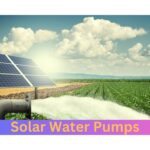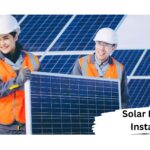In today’s rapidly changing world, the demand for sustainable agricultural practices has never been more urgent. Traditional farming methods, while essential, often place a heavy burden on natural resources. Enter solar agriculture, a practice marries renewable solar energy with agricultural production. This innovative approach not only reduces the environmental footprint of farming but also offers farmers a reliable and cost-effective energy source.
Solar agriculture is much more than installing solar panels on a farm. It’s about integrating clean energy technologies with traditional farming practices to optimize land use, reduce costs, and increase productivity. Let’s explore the potential, benefits, and challenges of this groundbreaking farming model.
What is Solar Agriculture?
Solar agriculture, often called agrivoltaics, is the integration of solar photovoltaic (PV) systems into agricultural land. Farmers install solar panels either on open fields, rooftops of barns, or above crops in a way that allows for simultaneous farming and energy production. The key is finding the balance between the two, ensuring solar panels do not negatively impact crop yields.
This dual-use model offers tremendous potential. Solar panels can provide shade for crops, reducing water evaporation and keeping the ground cooler. In turn, crops such as leafy greens can thrive under shaded conditions. Moreover, solar energy can power irrigation systems, greenhouses, and other farm machinery, cutting down on operational costs.
How Solar Agriculture Works
The success of solar agriculture lies in its intelligent design. Here’s how it typically functions:
- Placement of Solar Panels: Solar panels are strategically placed to allow sunlight to reach the crops. Panels are often mounted at a height that permits farm equipment to move underneath them without hindrance.
- Energy Generation: Solar panels absorb sunlight and convert it into electricity, which can be used to power irrigation systems, farm equipment, and homes on the farm, or sold back to the grid.
- Crops and Shade: Some crops benefit from partial shade, especially in regions where intense sunlight can scorch plants. These crops can be planted under solar panels, which reduces their exposure to direct sunlight while also conserving water.
- Water Management: Solar farms often implement smart irrigation systems powered by solar energy. This allows farmers to control the measure of water used and make adjustments based on weather patterns and crop needs.
Benefits of Solar Agriculture
Solar agriculture offers numerous advantages to farmers, the environment, and even the wider community.
- Energy Cost Savings: One of the most significant benefits is the decrease in energy costs. Farms can produce their own electricity, reducing reliance on expensive, non-renewable energy sources.
- Increased Land Productivity: Instead of dedicating land solely to solar farms or agriculture, solar agriculture allows for dual usage. This maximizes the productivity of agricultural land, offering a way to produce food and energy simultaneously.
- Reduced Water Usage: Solar panels help reduce water evaporation from the soil by shading crops. This can be particularly beneficial in regions suffering from water scarcity or droughts.
- Sustainability: Solar energy is a clean, renewable resource. By harnessing it for agriculture, farmers can reduce their carbon footprint and contribute to a more sustainable future.
- Resilience to Climate Change: In the face of increasingly unpredictable weather patterns, solar agriculture provides a buffer. Farms with solar panels can generate income from energy production even during periods of low crop yields due to adverse weather.
- Government Incentives: In many regions, governments offer incentives, tax credits, or subsidies for adopting solar energy. This can further reduce the costs associated with solar panel installation.
Challenges of Solar Agriculture
While the benefits are clear, there are also challenges to overcome in solar agriculture:
- Initial Costs: The upfront cost of buying and installing solar panels can be high, especially for small or medium-sized farms. However, this cost is often offset over time through energy savings and government incentives.
- Land Use Conflicts: In some cases, there may be concerns about whether solar panels will take up valuable farmland or negatively affect crop yields. However, proper design and crop selection can mitigate these issues.
- Maintenance and Expertise: Managing a solar farm requires technical knowledge. Farmers may need to invest in training or hire specialists to maintain their systems and ensure optimal energy production.
- Public Perception: There can be resistance from local communities or stakeholders who are unfamiliar with solar agriculture. Public outreach and education are essential to overcome these hurdles and demonstrate the long-term benefits.
Solar-Powered Irrigation Systems
One of the most promising applications of solar agriculture is solar-powered irrigation systems. These systems rely on solar energy to pump water from rivers, lakes, or groundwater sources to irrigate crops. Solar-powered pumps are a sustainable solution, particularly in off-grid rural areas where traditional electricity may not be accessible.
By using solar energy, farmers can irrigate their fields during daylight hours without relying on expensive fuel-powered pumps. Solar irrigation systems are not only environmentally friendly but also significantly reduce water wastage, making them a key technology for regions prone to water shortages.

Crop Selection in Solar Agriculture
Not all crops are suited to the shade provided by solar panels. However, many shade-tolerant crops can benefit from partial sunlight, thriving in the cool microclimate created by the panels. Some examples of crops that can do well in a solar agricultural setup include:
- Leafy greens: Spinach, lettuce, and kale thrive under partial shade.
- Root vegetables: Crops like carrots and potatoes can grow well with less direct sunlight.
- Berries: Strawberries and blueberries are known to benefit from protection from intense sun exposure.
- Herbs: Plants like mint, basil, and cilantro can flourish in the cooler conditions under solar panels.
By carefully selecting crops that align with the shading patterns of the solar panels, farmers can maximize their yields.
Solar-Powered Greenhouses
Another exciting innovation in solar agriculture is the use of solar-powered greenhouses. These structures are designed to harness solar energy not only for lighting and heating but also to power fans, sensors, and automated systems. Solar greenhouses extend the growing season, allow farmers to control environmental conditions, and reduce the need for external energy sources.
In colder climates, solar greenhouses can significantly cut heating costs, making it more economical for farmers to grow crops year-round.
FAQs About Solar Agriculture
Q1: What is the difference between solar farming and solar agriculture?
A: Solar farming refers to using land specifically for solar energy production, while solar agriculture integrates solar panels into farmland, allowing crops and solar energy to be produced simultaneously.
Q2: Can all crops grow under solar panels?
A: Not all crops thrive under partial shade, but many shade-tolerant plants, such as leafy greens and root vegetables, can grow successfully beneath solar panels.
Q3: How much does it cost to set up a solar agriculture system?
A: The initial cost can vary widely depending on the size of the system and location, but many farms recoup their investment through energy savings, crop production, and government incentives.
Q4: Does solar agriculture work in cloudy or cold regions?
A: Yes, solar panels can still generate energy in cloudy conditions, though less efficiently. Solar agriculture can also be adapted to colder climates using technologies like solar-powered greenhouses.
Q5: How long does it take to break even on the investment in solar agriculture?
A: The time it takes to recoup the initial investment depends on factors like energy costs, the size of the system, and available incentives. On average, farms may see a return on investment within 5 to 10 years.
